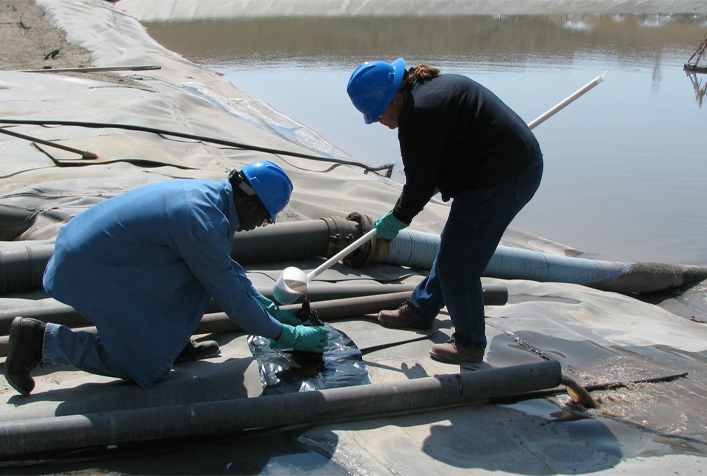Support for PFAS Enforcement and Compliance Across Multiple Statutes

Project Brief
The Challenge
Per- and poly-fluoroalkyl substances are a group of manufactured chemicals found in many products and in our water, soil, air, and food. While the term PFAS includes thousands of different chemicals, one common feature is that PFAS degrades slowly so can build up over time. Potential health effects from PFAS exposure include developmental delays in children, increased risk of cancer, and reproductive effects in pregnant women. Consequently, PFAS have emerged as contaminants of concern that the U.S. Environmental Protection Agency has been investigating. EPA contracted with ERG to support PFAS-related enforcement and compliance investigations across multiple statutes, including the Clean Water Act, Safe Drinking Water Act, Resource Conservation and Recovery Act, and Toxic Substances Control Act.
ERG's Solution
ERG has been gathering information about PFAS by reviewing historical PFAS sampling data, permit, and compliance documents; conducting field inspections and sampling efforts; and testing products expected to contain elevated PFAS concentrations. We have also reviewed facility emission data, treatment technologies, and worker personal protective equipment to ensure facility compliance with regulations. ERG has sampled for PFAS in surface soil, sediments, wastewater, stormwater, groundwater, potable water, surface water bodies (including lakes, rivers, and coastal waters), process wastes (including hazardous waste), and consumer products. We have conducted PFAS sampling at industrial facilities and drinking water wells to assess compliance with the CWA, SDWA, RCRA, and TSCA, and with National Pollutant Discharge Elimination System permit requirements. ERG has contracted with laboratories for both targeted and non-targeted PFAS analyses. Through this support, ERG has documented areas of concern based on inspection observations and sampling results. We have also conducted technology evaluations and provided EPA with recommendations for additional pollutant controls that facilities should implement to comply with applicable regulations and permit requirements.
Client
U.S. Environmental Protection Agency